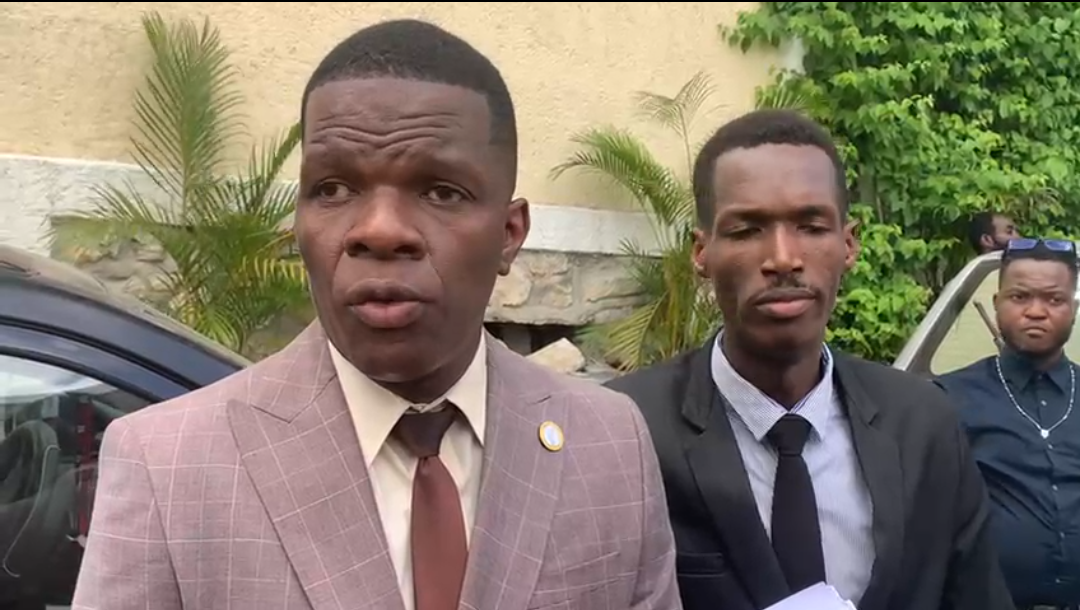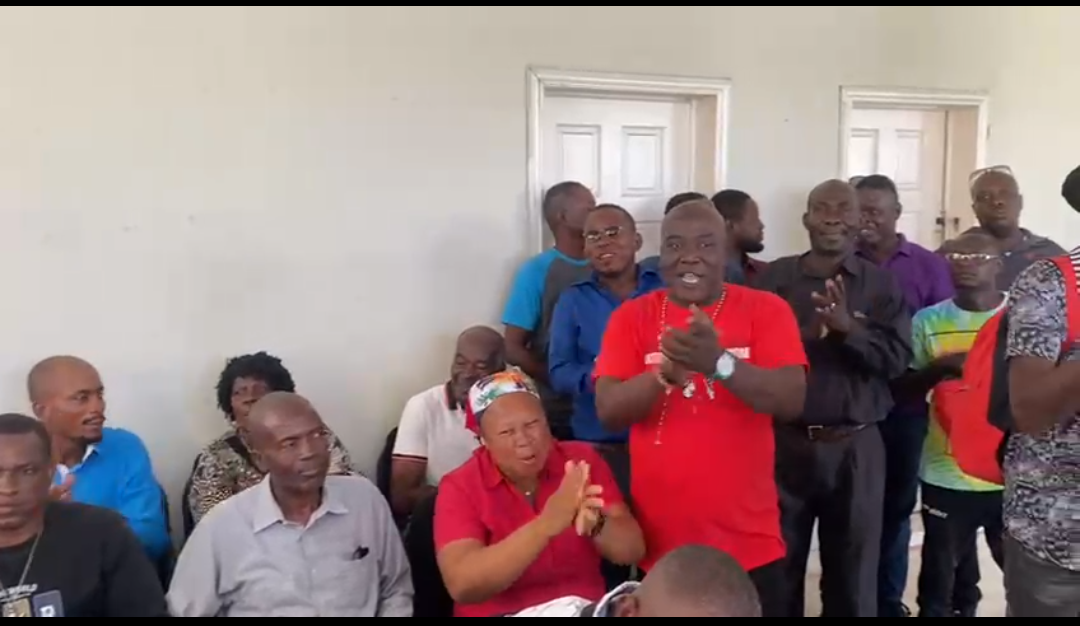CHICAGO — Omicron is surging. Virus testing for schools is a mess. Teachers are demanding remote schooling; education officials are saying no.
And Chicago parents do not know what to expect on Wednesday morning.
The latest Covid-19 surge has disrupted education across the country, but in Chicago, it has led to a bitter confrontation with the teachers’ union. On Tuesday, two days into the new semester, members of the union’s House of Delegates voted in favor of refusing to report to school buildings starting on Wednesday; parents and city officials were anxiously awaiting the results of an online vote of the union’s full membership.
The Chicago Teachers Union — which has had a long, confrontational relationship with the city — hoped the vote would push the city to transition to remote learning. But Chicago officials insist in-person learning is necessary and safe, and responded by saying they would cancel classes if teachers did not report to school buildings, but keep the buildings open for emergency child care.
“Nobody signs up for being a home-schooler at the last minute,” Mayor Lori Lightfoot said at a news conference. “We can’t forget about how disruptive that remote process is to individual parents who have to work, who can’t afford the luxury of staying home.”
Ms. Lightfoot, a Democrat, urged teachers to report to work and suggested they were considering an illegal work stoppage.
As the highly contagious Omicron variant rears its head, so do debates that were considered settled. After a relatively calm fall, when administrators, unions and families largely agreed that remote schooling was a nonstarter, the brinkmanship between the nation’s third-largest school district and its union exposes just how quickly that political consensus can fall away.
Like other school systems, Chicago has had to confront a shortage of coronavirus tests and a far from universal vaccination rate among students. There have been large numbers of staff members calling in sick, and widespread anxiety among just about everyone. Other districts, including in Cleveland, Milwaukee and Atlanta, have also gone online temporarily, but without a public labor dispute.
“We are between a rock and a hard place — the rock being the pandemic, the hard place being an intractable, incompetent mayor,” Stacy Davis Gates, the union’s vice president, said this week. She added: “We said a two-week pause so they could get themselves together, have the proper communication, put in the necessary mitigations.”
Coronavirus cases have skyrocketed in Chicago to their highest level since the pandemic began. But as in the rest of the country, vaccinated adults have had lower rates of hospitalization and death, while children of all ages — regardless of vaccination status — have overwhelmingly been spared severe outcomes.
In addition, data from Chicago and elsewhere shows that in-school transmission of Covid-19 has been limited, with a majority of teacher and student cases originating outside school buildings. More than 90 percent of Chicago Public Schools employees are fully vaccinated.
Still, members of the powerful Chicago Teachers Union have accused the school district of failing to adjust to Omicron, and the growing threat of breakthrough infections. During the holiday break, they had asked for either universal P.C.R. testing of students and staff or a two-week transition to remote learning.
Members of the union’s executive board on Monday advanced a measure that called for virtual instruction until Jan. 18, unless the city saw a major decline in virus cases before then.
Pedro Martinez, the district’s chief executive, said on Tuesday that he would be more aggressive about shutting down school buildings if large numbers of staff and students there had coronavirus infections. But he pushed back against a districtwide shutdown, suggesting that misinformation was at the root of anxiety over reopening.
He spoke of the district’s $100 million investment in improving building ventilation, and efforts to monitor air quality in each classroom. He said he had continued “to plead, including with C.T.U. leadership, to keep the schools open, to keep the classes going.”
Dr. Allison Arwady, the city’s public health commissioner, said on Tuesday that she remained “extremely comfortable” with students learning inside schools.
“We’ve got to do risk-benefit analysis here, and at least among children, we have to think of this as similar to flu,” Dr. Arwady said, explaining that Chicago is averaging seven child hospitalizations per day because of Covid-19.
Jan. 4, 2022, 9:51 p.m. ET
But the district’s bungled effort to test tens of thousands of students over winter break only added to parents’ and teachers’ concerns. Most of the roughly 150,000 mail-in P.C.R. tests given to students were never returned. Of the 40,000 or so tests that were mailed in, a majority produced invalid results.
Mr. Martinez said that many families had trouble following the test instructions, and that he had learned an important lesson: that student testing should be conducted at schools in order to be effective.
“I wanted to reduce the anxiety level, and I’m just disappointed that I couldn’t achieve that,” said Mr. Martinez, who called on the federal government to address the persistent shortages of tests. Moving forward, the district has committed to providing at least 30,000 screening tests per week; there are about 340,000 students in the system.
The Centers for Disease Control and Prevention has advised schools to avoid quarantines and closures by using a protocol known as test-to-stay, in which close contacts of positive virus cases take two rapid antigen tests in a week; only those who test positive must stay home.
But officials in Chicago, like those in many cities and towns across the country, said they did not have nearly the number of rapid tests they needed.
Dr. Arwady, the health commissioner, said the city had not received new shipments of the rapid tests since November, despite outstanding orders.
The Coronavirus Pandemic: Key Things to Know
The global surge. The coronavirus is spreading faster than ever at the start of 2022, but the last days of 2021 brought the encouraging news that the Omicron variant produces less severe illness than earlier waves. As such, governments are focusing more on expanding vaccination than limiting the spread.
Return to office. For many businesses, the recent surge has brought a swift reversal of return-to-office plans. In recent days, companies including Goldman Sachs and Chevron have begun to backtrack on workplace policies. Some are telling employees to stay home with just days, or even hours, to spare before their planned returns.
She attributed the rapid test shortage to the federal government’s efforts to centralize the purchasing and distribution of the tests, and said she expected the problem to abate soon.
“If you’ve got the means, I would go ahead and order home tests right now,” she advised families — a further burden on parents awaiting news on whether their children would be attending school the following day.
Randi Weingarten, president of the American Federation of Teachers, said her union’s Chicago affiliate was not to blame for the labor strife. She asked why the nation’s two larger districts, New York and Los Angeles, had been able to collaborate with unions to set up testing programs, while Chicago’s testing effort had failed.
Pandemic school closures have contributed to backlash against union-affiliated Democrats in places like Virginia and New Jersey, particularly in majority-white suburbs. But Ms. Weingarten said she was not worried about the political ramifications in Chicago. The city is heavily Democratic, and its public school students are predominantly Black and Latino.
“I’m worried about it for the kids and for the teachers and for families,” she said.
Some parents in Chicago have questioned the wisdom of reopening classrooms amid Omicron, and Mr. Martinez acknowledged that there were schools where most children had not been in class this week.
Nicole Perkins, a mother of three who lives on Chicago’s South Side, said it had been scary to send her children back to school.
Two of her children tested positive for the coronavirus shortly before winter break, and she said she did not trust the district’s safety precautions. The union vote, she said, was an act of courage.
Ms. Perkins, who pays her sister to look after her children when classes are taught remotely, said there were benefits when children remained in the classroom. “But should those benefits,” she said, “come at costing them their lives possibly or the long-term side effects of Covid?”
Shelley Davis, whose oldest daughter is a high school senior, said that while she thought teachers’ perspectives were important — her mother is a member of the Chicago union — she hoped the district could find some compromise to keep children in school.
Ms. Davis, who runs a foundation, is also concerned about what students may be losing socially if they go back to remote learning. “It kind of breaks my heart,” she said. “They’re having such a different childhood than what I can imagine.”
Maria Hadden, who represents a diverse North Side ward on the Chicago City Council, said she worried about the long-term impact of the repeated labor strife, and said she hoped that Mr. Martinez, who is new in his role, would take a different approach than his predecessors.
Relations between the union and City Hall have been extraordinarily tense for a decade, stretching across the tenures of Ms. Lightfoot and her predecessor, Rahm Emanuel. In 2019, months before the pandemic, teachers went on strike for 11 days and extracted concessions from Ms. Lightfoot on pay, class sizes and support staff. A year ago, when schools first returned to in-person instruction, the city and union engaged in weeks of tense negotiations.
“Having these very public head-butting sessions is really detrimental for, I think, Chicago Public Schools overall,” Ms. Hadden said. She added, “People expect us to get over ourselves, to get over our really strong need to be absolutely right or to not be seen as giving into demands.”
Giulia Heyward contributed reporting.










